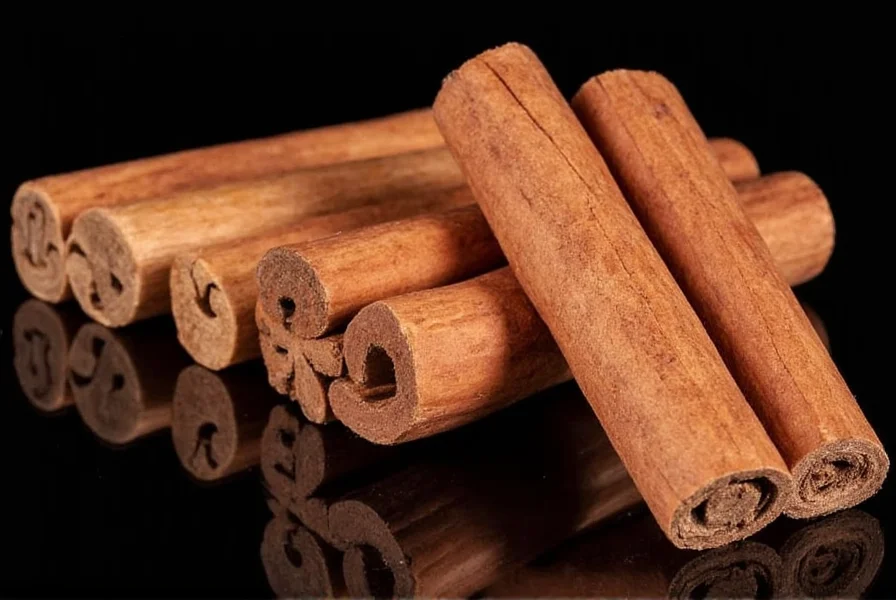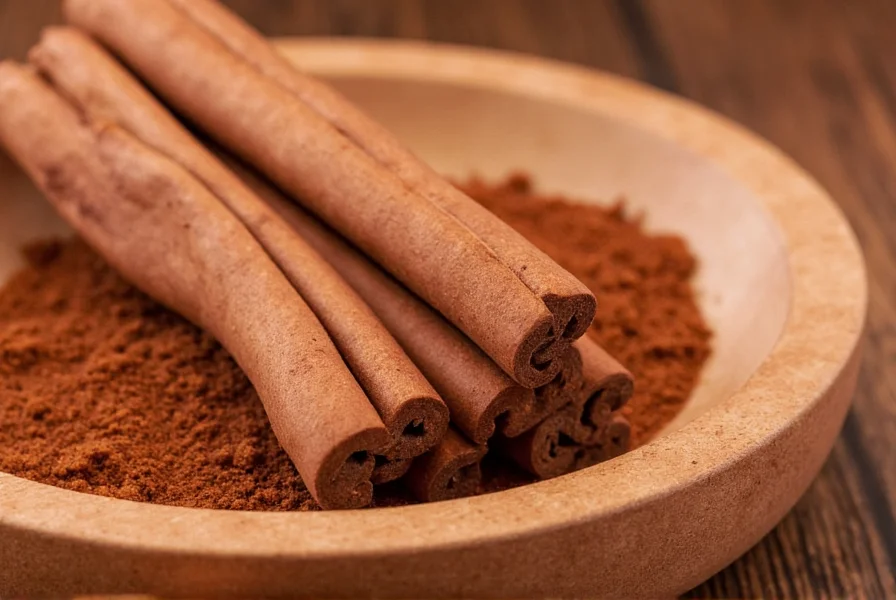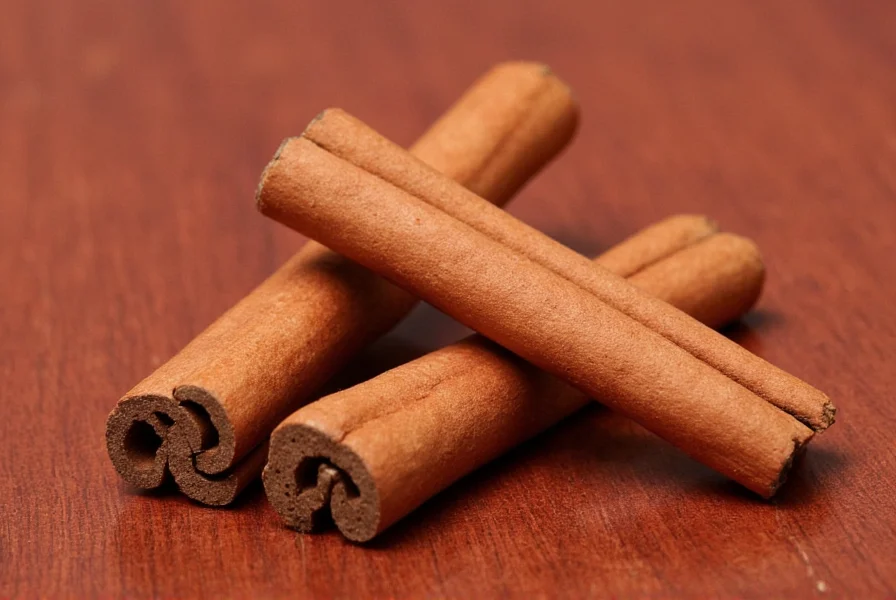When exploring Chinese cinnamon vs cassia, it's important to understand they're the same botanical entity—Cinnamomum cassia. This variety constitutes approximately 95% of cinnamon consumed in the United States and is frequently labeled simply as “cinnamon” in supermarkets. Its distinctive reddish-brown color, thick quills that curl inward at both ends, and robust flavor make it easily distinguishable from the more delicate Ceylon variety.
Botanical Characteristics and Identification
Cinnamomum cassia belongs to the Lauraceae family and grows as an evergreen tree reaching 10-15 meters in height. The characteristic spice comes from the inner bark, which develops its signature aroma through the drying process. When identifying authentic Chinese cinnamon, look for:
- Thick, single-layered bark quills (2-3mm thick)
- Deep reddish-brown color
- Strong, spicy aroma with less floral notes than Ceylon
- Hard texture that requires special grinders
- Distinctive sweet-heat flavor profile
| Characteristic | Chinese Cinnamon (Cassia) | Ceylon Cinnamon |
|---|---|---|
| Scientific Name | Cinnamomum cassia | Cinnamomum verum |
| Bark Thickness | 2-3mm (thick, hard) | 0.5mm (thin, fragile) |
| Coumarin Content | High (2,500-8,000 ppm) | Very low (50-300 ppm) |
| Flavor Profile | Strong, spicy, intense | Mild, sweet, complex |
| Quill Structure | Single thick layer | Multiple thin layers |
Culinary Applications and Flavor Chemistry
The distinctive flavor of Chinese cinnamon culinary uses stems from its chemical composition, particularly its high cinnamaldehyde content (approximately 70-80%). This compound creates the characteristic spicy warmth that makes Chinese cinnamon ideal for:
- Baking applications where strong flavor penetration is needed
- Spice blends like Chinese five-spice powder
- Stewed fruits and compotes that benefit from robust flavor
- Meat rubs and savory braises
- Traditional Chinese medicinal preparations
Professional chefs often prefer Chinese cinnamon for dishes requiring long cooking times, as its flavor holds up better than the more delicate Ceylon variety. When substituting between varieties, use approximately half the amount of Chinese cinnamon compared to Ceylon to achieve equivalent flavor intensity.

Health Implications and Scientific Research
Research into Chinese cinnamon health effects reveals both potential benefits and important considerations. Unlike Ceylon cinnamon, Chinese cinnamon contains significant levels of coumarin—a compound that may cause liver toxicity in sensitive individuals when consumed in large quantities over time.
Current European Food Safety Authority guidelines recommend a maximum daily coumarin intake of 0.1 mg per kilogram of body weight. For a 60 kg adult, this translates to approximately 1 teaspoon (2.5g) of Chinese cinnamon daily. Those with liver conditions should exercise particular caution.
On the positive side, numerous studies have examined Chinese cinnamon benefits related to:
- Blood sugar regulation: Multiple clinical trials show potential benefits for type 2 diabetes management
- Antimicrobial properties: Effective against various foodborne pathogens
- Anti-inflammatory effects: Demonstrated in laboratory studies
- Antioxidant capacity: High ORAC value compared to other spices
However, researchers caution that most studies use concentrated extracts rather than culinary amounts, and more human trials are needed to confirm therapeutic applications.
Traditional Medicine and Modern Applications
In Traditional Chinese Medicine (TCM), Chinese cassia cinnamon uses date back thousands of years. Known as “rou gui,” it's classified as a “warm” herb used to treat “cold” conditions like poor circulation, digestive issues, and respiratory ailments. TCM practitioners typically use it in combination with other herbs to balance its strong properties.
Modern applications continue to explore these traditional uses. A 2023 meta-analysis published in the Journal of Ethnopharmacology found promising evidence for Chinese cinnamon's role in improving insulin sensitivity, though researchers noted significant variability between study methodologies.
Purchasing and Storage Guidelines
When selecting Chinese cinnamon, consider these practical tips for optimal quality:
- Choose whole sticks over powder for longer shelf life and better flavor retention
- Look for deep reddish-brown color without signs of mold or moisture
- Smell for strong, sweet-spicy aroma (weak smell indicates age)
- Store in airtight container away from light and heat
- Use within 6-12 months for peak flavor (powder degrades faster than sticks)
For those concerned about coumarin content, consider alternating between Chinese and Ceylon varieties depending on the recipe requirements. Many specialty spice retailers now clearly label their cinnamon products with botanical names to help consumers make informed choices.

Conclusion: Making Informed Choices
Understanding the distinctions between Chinese cinnamon vs Ceylon cinnamon empowers consumers to make informed decisions based on both culinary needs and health considerations. While Chinese cinnamon offers robust flavor ideal for many applications, awareness of its higher coumarin content helps ensure safe consumption. As research continues to explore the potential health benefits of Chinese cinnamon benefits, maintaining a balanced perspective on both traditional uses and scientific evidence remains essential for anyone incorporating this ancient spice into their modern lifestyle.
Frequently Asked Questions
Is Chinese cinnamon the same as cassia cinnamon?
Yes, Chinese cinnamon and cassia cinnamon refer to the same botanical species (Cinnamomum cassia). The terms are used interchangeably, though “Chinese cinnamon” emphasizes its geographic origin while “cassia” refers to its botanical classification. It's the most common variety sold as “cinnamon” in North American supermarkets.
What are the main differences between Chinese and Ceylon cinnamon?
Chinese cinnamon has thicker, harder bark quills (2-3mm) compared to Ceylon's thin, multi-layered quills (0.5mm). It contains significantly higher coumarin levels (2,500-8,000 ppm vs. 50-300 ppm), has a stronger, spicier flavor, and is less expensive. Ceylon cinnamon offers a more delicate, complex flavor profile with lower coumarin content, making it safer for regular consumption in larger quantities.
How much Chinese cinnamon is safe to consume daily?
Due to its high coumarin content, the European Food Safety Authority recommends limiting Chinese cinnamon intake to approximately 0.1 mg of coumarin per kilogram of body weight daily. For a 60 kg (132 lb) adult, this equates to about 1 teaspoon (2.5g) of Chinese cinnamon powder. Those with liver conditions should consult healthcare providers before regular consumption.
Can Chinese cinnamon help regulate blood sugar?
Several clinical studies suggest Chinese cinnamon may improve insulin sensitivity and help regulate blood sugar levels, particularly in type 2 diabetes management. However, most research uses concentrated extracts rather than culinary amounts, and results have been inconsistent. While promising, it shouldn't replace prescribed diabetes treatments without medical supervision.











 浙公网安备
33010002000092号
浙公网安备
33010002000092号 浙B2-20120091-4
浙B2-20120091-4